
The global shortage of semiconductors or chips in the aftermath of the Covid-19 led pandemic has eased as per a report by Crisil. A development that led most automakers to cut down production significantly and postpone the launch of new models or to put them to production through 2020, 2021, 2022 and a good part of 2023 has finally eased to iron out any supply chain disruptions that may be there.
Expected to address and improve predictive demand forecast, the better availability of chips should enable better production schedules. By FY2025-26, Crisil analysts are of the opinion that demand-supply dynamics should be more balance with additional manufacturing capacities getting commissioned.
With the chips possessing distinct electrical properties that make them the cornerstone of all electronic equipment and devices, it is the auto industry that has come to use them for a variety of functions as automobiles turn increasingly software driven. While the computer and communication equipment (C&C) segment consumes roughly 63 percent of the chips produced, the auto industry consumes roughly 13 percent of them. The other industrial segments consume about 12 percent.
With new developments such as autonomous and EVs, the use of semiconductors in automobiles is only slated to rise. With passenger vehicles the recipient of most technological innovations ahead of other segments such as two-wheelers, three-wheelers and commercial vehicles, it should not come as a surprise that they consume about 1,500 chips on average – the highest among all automobile types.
As more advanced electronic features are incorporated, the use for chips increases. The electric passenger vehicles, for example, use almost twice as many chips as internal combustion engine (ICE) passenger vehicles do. The improving supply and slowing demand for computers and mobile phones is therefore looked upon as a blessing in disguise for automobiles and their manufacturers.
Anuj Sethi, Senior Director, CRISIL Ratings, mentioned, “The chip shortage faced by Indian passenger vehicle makers is easing, with current availability at 85-90 percent of total requirement. The production loss on account of the chip shortage, which had halved to about 300,000 PVs on-year in fiscal 2023, is estimated to have further declined to under 200,000 PVs by the end of September 2023.”
Most passenger vehicle manufacturers are currently operating at near optimal capacity utilisation due to stronger-than-anticipated demand. New orders to be serviced remains high at about 700,000 units at the end of September 2023.
The easing of chip shortage should help automakers honour new orders with better prediction and faster production. Global automobile demand, severely impacted by the Covid-19 pandemic, made a strong recovery in the latter part of FY2021-22. It caught automobile manufacturers off guard as they had not placed substantial orders for chips.
The surge in demand for personal computers, laptops and mobile phones, driven by work from home, virtual learning and remote healthcare services, led to a significant chip procurement challenge for the automakers.
Geographically, the chip ecosystem is skewed, with western nations dominating chip architecture, design, manufacturing equipment, specialised materials and chemicals. Semiconductor fabs1 on the other hand are concentrated in eastern nations, such as Taiwan and South Korea.
Given the criticality of chips in the defense and aerospace industries, the United States and the European Union have offered incentives of about USD 100 billion for localisation of semiconductor fabs. As a result, many global players are slated to spend about USD 360 billion towards setting up new facilities, which would be operational by 2025 and 2026.
In the Indian context, demand for chips will continue to increase over the medium term, driven by the gradual rise in EV adoption and growing demand for advanced feature-laden ICE vehicles.
ZF To Present Software Active Noise Reduction For Vehicle Chassis At CES
- By MT Bureau
- December 17, 2025
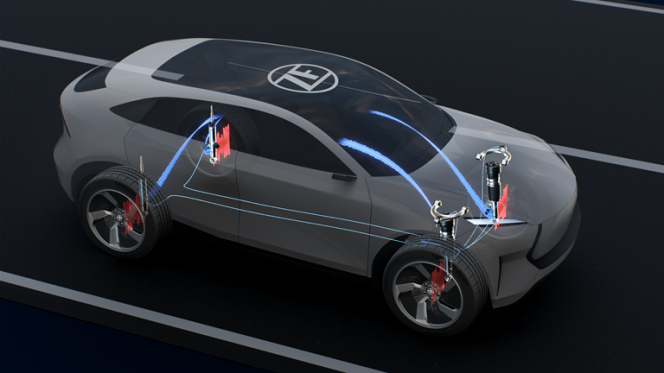
German tier 1 supplier ZF is presenting a new ‘Active Noise Reduction’ software function for vehicle chassis at the Consumer Electronics Show (CES) 2026. The purely software-based function reduces in-vehicle tyre noise transmitted through chassis components without requiring additional hardware. The company plans to expand the use of the function to other ZF chassis actuators in the future.
The solution uses ZF’s Smart Chassis Sensor with an integrated acceleration sensor to measure vibrations from the tyres. A developed algorithm recognises the characteristic noise patterns of tyre cavity noise around 200 hertz.
The software generates a counter-signal via ZF’s cubiX software through the valves of semi-active dampers (CDC). The function uses micro-movements of the damper to specifically reduce noise interference without impairing the damper function.
The technology achieves noise reductions of more than 3 dB, with future potential for up to 10 dB. This software-based noise reduction is achieved without additional installation costs or space requirements. Active Noise Reduction can be adapted to different vehicle types via software, opening a market for lower-priced vehicles.
Dr. Peter Holdmann, Member of the ZF Board of Management and Head of Division Chassis Solutions, said, “Active Noise Reduction is an excellent example of how we use smart algorithms to make ZF components even more efficient. This gives our semi-active CDC dampers a clear unique selling point in the market and sets new standards in comfort – without the need for any additional noise dampening hardware.”
Series production is scheduled to start in 2028. In the future, the function may be used in other ZF actuators, such as for active reduction of brake squeal.
Holdmann added, “Thanks to our system expertise, we are able to offer our mechatronic actuators as true innovation drivers with the help of smart algorithms and we will extend our software-based control approach to other ZF actuators in the future. The goal for us is clear: mechatronic actuators that are capable of efficiently reducing both their own and external noise with the help of software.”
The new function fits into ZF’s Chassis 2.0 product strategy, which uses intelligent and networkable actuators to enable new chassis functions via software.
Holdmann noted: “With our Chassis 2.0, we are laying the foundation for the software-defined vehicle.”
Drako Tech Unveils DriveOS With Single-ECUArchitecture
- By MT Bureau
- December 17, 2025
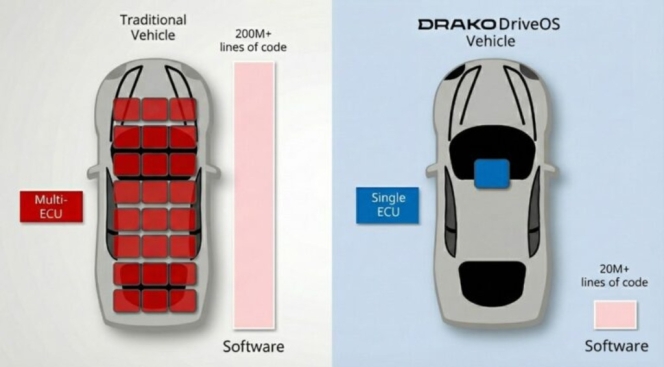
California-based Drako Tech has announced DriveOS with HyperSafety, an automotive operating system designed for single-Electronic Control Unit (ECU) operation. The platform consolidates vehicle subsystems, including control systems, ADAS and digital cockpit, into one unit to reduce costs and enable over-the-air (OTA) updates.
Launched in 2015 and utilised in Drako GTE and Drako Dragon vehicles, DriveOS supports internal combustion, electric and hybrid propulsion systems.
The HyperSafety system provides real-time performance via a single-ECU architecture. According to Drako Tech, the networking backbone facilitates communication four times faster than multi-ECU Time-Sensitive Networking (TSN) automotive Ethernet.
The architecture employs hardware isolation and redundancy to maintain operation during component failures. By using a reduced code footprint and hardware partitioning, the platform aims to limit attack surfaces for cyber security and streamline validation processes.
Industry Integration
Drako Tech provides development environments that run natively on DriveOS:
- Control Systems: Allows engineers to build vehicle controls from Simulink models.
- Digital Cockpit: A system for instrument clusters, navigation and multimedia.
- ADAS: A software foundation for driver assistance with low-latency control.
The platform addresses the complexity of multi-ECU architectures, which typically require separate units for functions such as seats, doors and thermal management. Drako Tech uses a separation kernel to run safety-critical systems alongside non-critical systems, such as infotainment, on the same ECU.
DriveOS introduces hard real-time capabilities to Linux without requiring kernel changes. This allows developers to use Linux libraries and tools for safety-critical systems.
Key features include:
- Performance: 108-microsecond end-to-end performance compared to 514 microseconds for TSN Ethernet.
- Consolidation: The ability to move functions onto a single PC architecture to reduce hardware mass and complexity.
- Redundancy: Hardware-backed isolation ensures faults in one subsystem do not affect driving functions.
- Cloud Integration: Real-time fleet management and diagnostics without creating access paths to control systems.
Dean Drako, CEO, Drako Tech, said, “Nearly half of the cost of new vehicles is tied up in software and electronics. Drako Tech now offers all OEMs worldwide – regardless of size or influence – a definitive leap in their ability to deliver exceptionally safe, connected, AI-enhanced vehicles, with massive cost advantages. We are the first to achieve the ultimate goal – a single-ECU, hard real-time operating system and unified electronics architecture with mixed criticality – while providing OEMs a flexible deployment path.”
dSPACE To Present AI-Driven Test Solutions For SDV At CES 2026
- By MT Bureau
- December 17, 2025
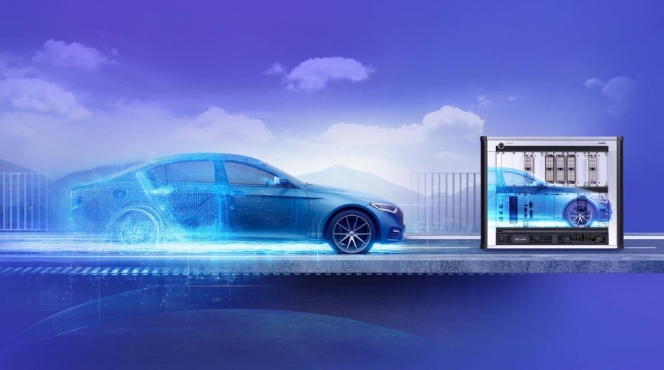
German technology company dSPACE is set to showcase end-to-end test solutions at CES 2026 to assist vehicle manufacturers with the development of software-defined vehicles (SDV).
The company will present a validation portfolio featuring AI-supported software-in-the-loop (SIL) and hardware-in-the-loop (HIL) solutions.
It is exploring how generative and agentic AI technologies can support SIL testing and enable CI/CD pipelines for validation. An exhibit will demonstrate a Visual Studio Code and GitHub Copilot solution for the generation of virtual ECUs for SIL tests.
To meet the requirements of short-cycle development, dSPACE is demonstrating a CI/CT concept presenting a cloud-native validation approach. This includes a GitLab pipeline integrated with VEOS, the dSPACE SIL test software, and SCALEXIO, the HIL test platform.
dSPACE is also presenting a HIL Farm Management Demo designed to increase test efficiency. This displays the availability and utilisation of HIL systems and potential errors to reduce system downtimes and improve the use of test resources.
The technology company will use its test solutions for battery charging and battery management systems to demonstrate end-to-end SIL/HIL validation. Efficiency is increased by reusing test cases, simulation models, bus configurations and user interfaces across both methods. This allows for the demonstration of functions, including conformance tests, with the same layouts and cases.
The company is introducing DARTS ARROW, a radar solution for functional testing of sensors. Developed for end-of-line tests and periodic technical inspections, it validates safety systems such as emergency braking and lane departure warnings by simulating traffic scenarios to detect sensor errors.
For security, dSPACE will present HydraVision, a cybersecurity test framework. Using test case templates, it allows for the integration of cybersecurity tests into the development process to identify and mitigate weak points.
Additionally, the new SCALEXIO Essential system expands the SCALEXIO real-time platform. It is designed for the validation of edge ECUs for mechatronic applications in the automotive, agricultural, and construction machinery sectors. The system includes a software package and is intended as a cost-efficient entry point for HIL testing.
Greaves Cotton Appoints Santosh Singh As Chief Strategy And AI Officer
- By MT Bureau
- December 16, 2025
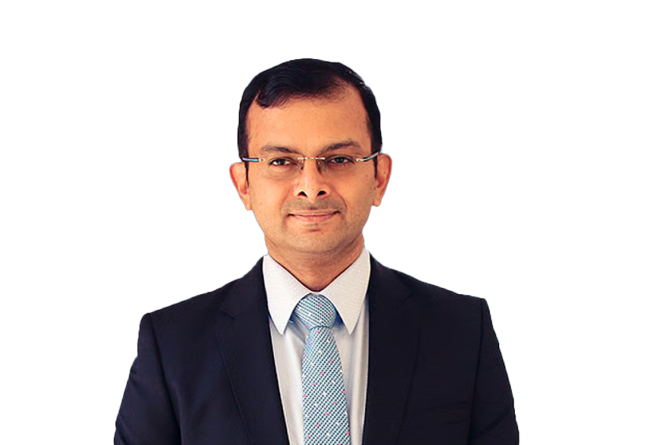
Greaves Cotton has appointed Santosh Singh as Chief Strategy and AI Officer. He will be based in Mumbai and will lead strategy, transformation, AI-led enterprise capability building and business excellence for the Greaves Cotton Group.
Singh comes with over two decades of experience in strategy, business excellence, innovation, and AI-led enterprise transformation. He joins Greaves Cotton from Tata Technologies (TTL), where he served as Global Head – Marketing and Business Excellence. During his tenure there, he co-led the enterprise GenAI roadmap and developed use cases focused on customer engagement and productivity.
His primary mandate is to drive the Greaves.NEXT strategy, the company’s roadmap for growth across the energy, mobility and industrial solutions sectors.
In his new role, Singh will focus on accelerating growth for Greaves Technologies (GTL), developing an enterprise-wide AI roadmap, and establishing partnerships with hyperscalers and AI labs.
Parag Satpute, Managing Director & Group CEO, Greaves Cotton, said, “We are pleased to welcome Santosh to the leadership team. His extensive expertise in strategy, digital transformation, and AI will play a significant role in shaping Greaves’ next phase of growth. His global experience will further strengthen our innovation roadmap and support our long-term business priorities.”
Singh will also work across business units to incubate and scale growth vectors and lead business excellence initiatives.


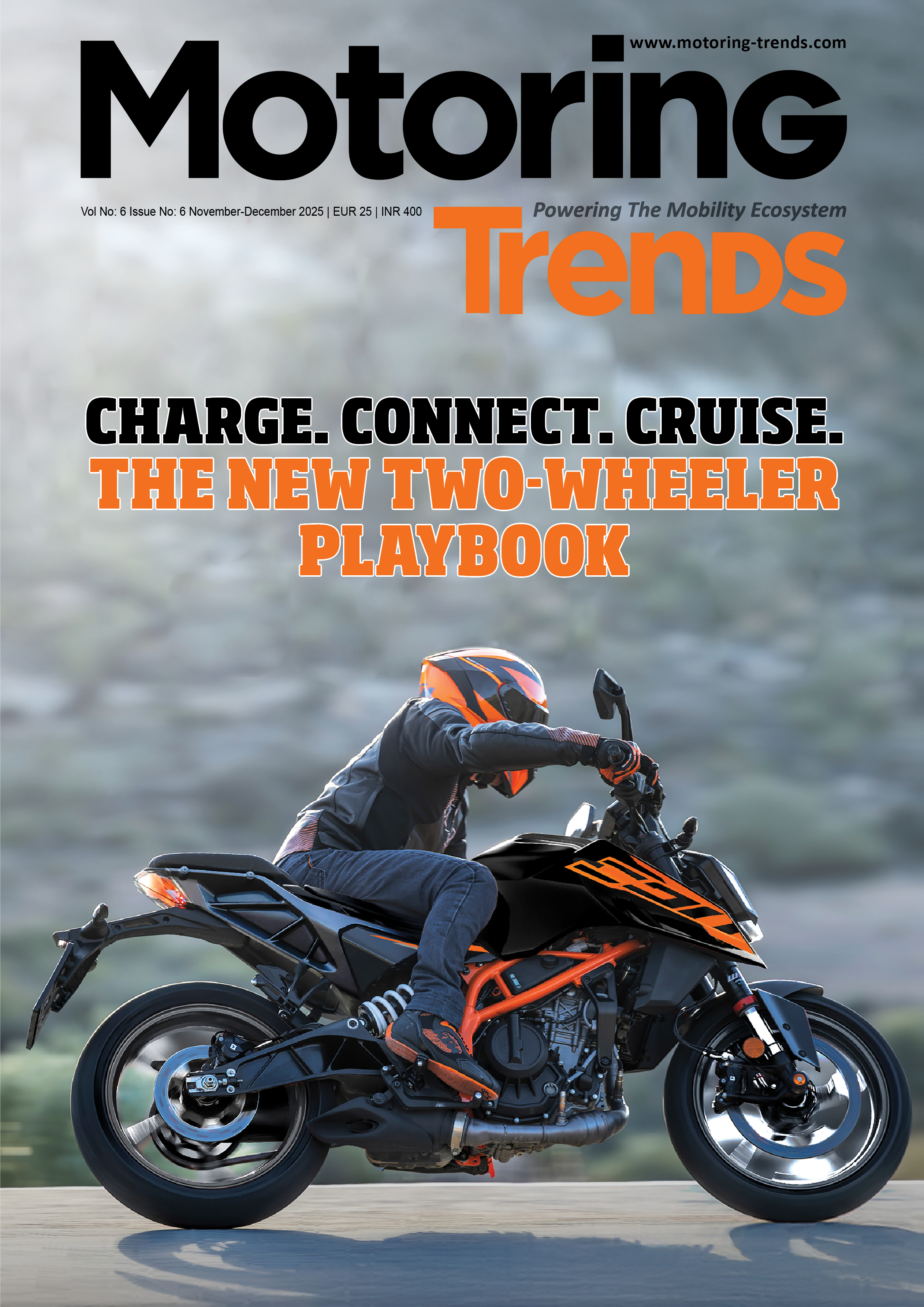



Comments (0)
ADD COMMENT